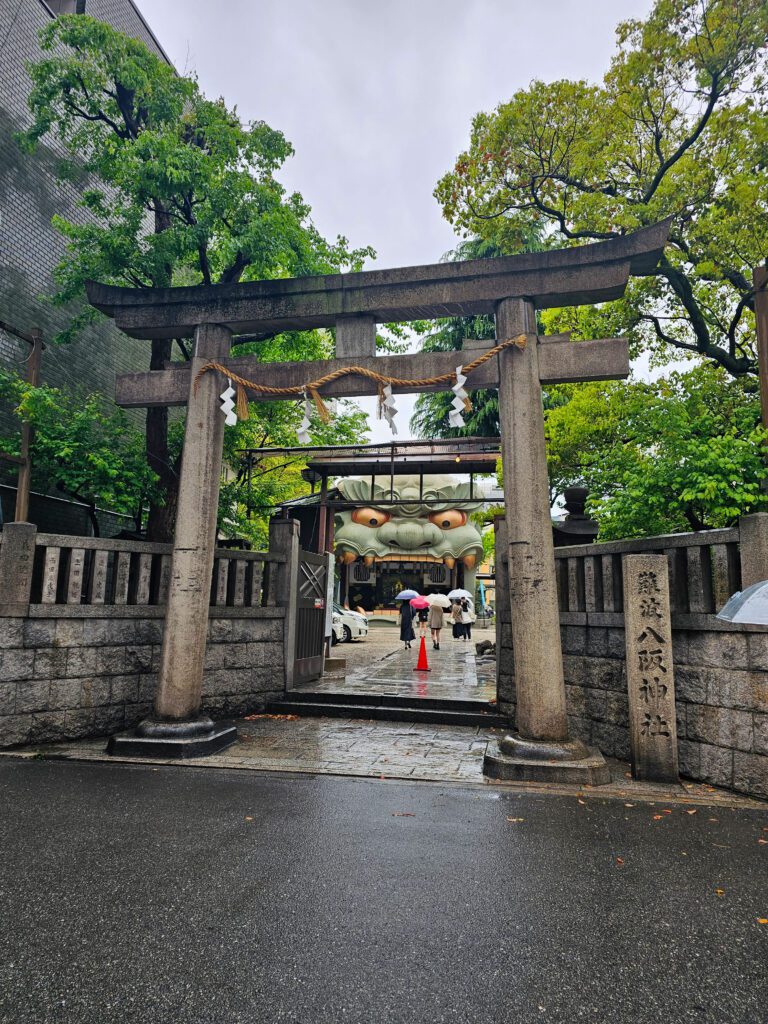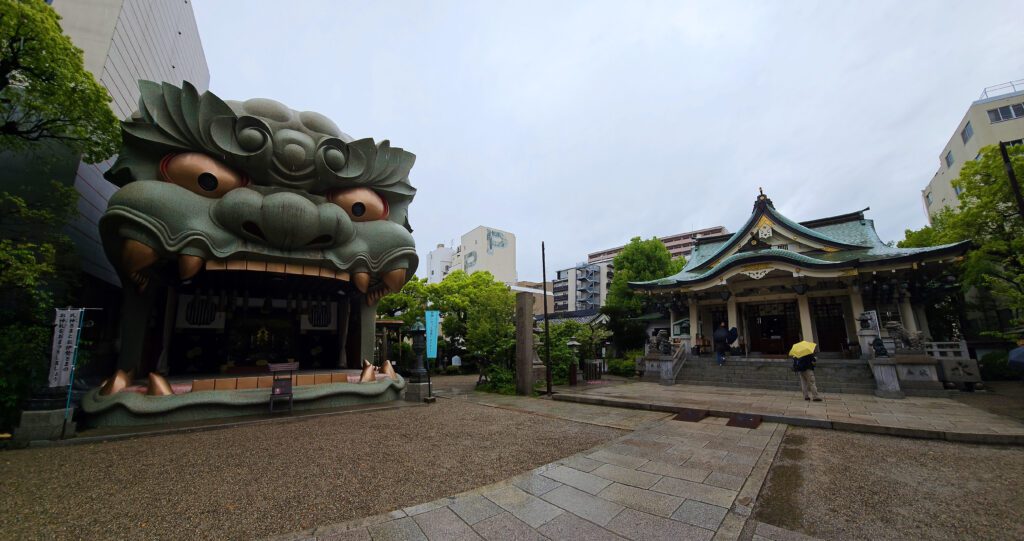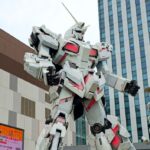Just imagine walking through the bustling streets of Namba, one of Osaka’s most vibrant districts, well-known for its nightlife and street food. As you enjoy the delightful taste of takoyaki (those yummy octopus bites!), something incredible catches your eye. Amidst the city’s concrete landscape, you come across a huge lion statue that appears to be roaring up at the sky. Surprising, right? I felt the same when I reached Namba Yasaka!

Namba Yasaka Shrine has a special and unique charm that sets it apart from other places. It gives off a vibe as if it’s taken straight out of a science fiction movie rather than a typical Japanese shrine!
Roaring through history
Although the exact date of its founding remains unknown, legend has it that it was once called ‘Namba Shimomiya‘ and served as the local deity of the Namba area. It is believed to have been established in response to a devastating epidemic during the reign of Emperor Nintoku in the 5th century.
To protect the Namba community from this disease, a protective deity against illnesses, Gozu Tenno, was placed during the Enkyu era of Emperor Go-Sanjo.
During Emperor Go-Sanjo’s rule (1069-1073), the shrine became dedicated to Gion Gozu Tenno.
In its early days, the shrine gained great significance and featured a complex of seven buildings known as Shichido Garan, associated with Buddhism. However, the Meiji Restoration in 1868 brought changes to the shrine’s structure due to the official separation of Shinto and Buddhism in Japan.
Unfortunately, during World War II in 1945, the shrine buildings suffered severe damage in a fire caused by air raids. Despite the devastation, the Namba community united after the war to seek financial support and willing collaborators for the shrine’s reconstruction.

Thanks to the collective efforts of the community and those dedicated to preserving history and culture, Namba Yasaka Shrine was rebuilt and has come to us in its present form. This reconstruction process symbolizes the unity and resilience of the Namba community in the face of challenges, as well as their determination to preserve this sacred site.
The main shrine as it stands today was completed in May 1974. In the same year, a stage with a large lion’s head, called “Shishiden“, was constructed and enshrined on the west side of the precinct.
Unconventional design
Namba Yasaka stands out with its unique architecture, making it noticeable amidst the bustling city. One of the main attractions is the lion-headed hall, an impressive 12-meter tall structure that catches visitors’ attention.
The building is constructed with reinforced concrete, steel, and wood, ensuring a solid and durable structure that withstands the test of time and weather.
In addition, the hall’s exterior is coated with synthetic resin sprayed with copper powder, giving it a distinctive and eye-catching color that stands out and draws visitors in.
The lion’s eyes and 24 teeth are made of brass, a shiny and durable metal. This not only enhances the hall’s appearance but also adds a symbolic touch. The golden eyes may represent a vigilant and protective gaze, while the 24 teeth showcase its strength and fierceness.

When sunlight reflects on the brass, the lion’s eyes and teeth shine, creating a stunning visual effect.
Beyond its stunning appearance, the lion’s head hosts various performing arts events throughout the year. The stage on top is a venue for theatrical performances, traditional dances, and cultural shows.
A fascinating detail is the use of the eyes as lights and the nose as a speaker, adding an interactive element to the structure, enhancing visual and sound effects during performances and events.
The lion, with its mouth wide open and penetrating gaze, is not just an amazing piece of architecture but also a symbol of protection and good fortune. According to legend, the lion is believed to consume malevolent spirits and bring prosperity in life. Like a vigilant guardian, it stands prepared to safeguard you from any unfavorable forces that may come your way.
Opening hours
Namba Yasaka Shrine is open 24 hours a day, every day of the year, so visitors can access it anytime.
However, the specific hours for religious worship are from 6:30 AM to 5:00 PM, during which rituals and ceremonies are held inside the shrine.
Entrance to the shrine is free, giving visitors the chance to explore and enjoy its beauty without any cost.

Finding your way to the shrine
Even though it’s in a central and easily accessible location, its unique charm can sometimes be overlooked compared to the more famous attractions in the area
Namba Station is one of the most convenient choices to reach Namba Yasaka Shrine, as it’s just a short walk of less than ten minutes.
If you prefer other nearby stations, both Namba Station and Daikokuchō Station are even closer to Namba Yasaka Shrine.



